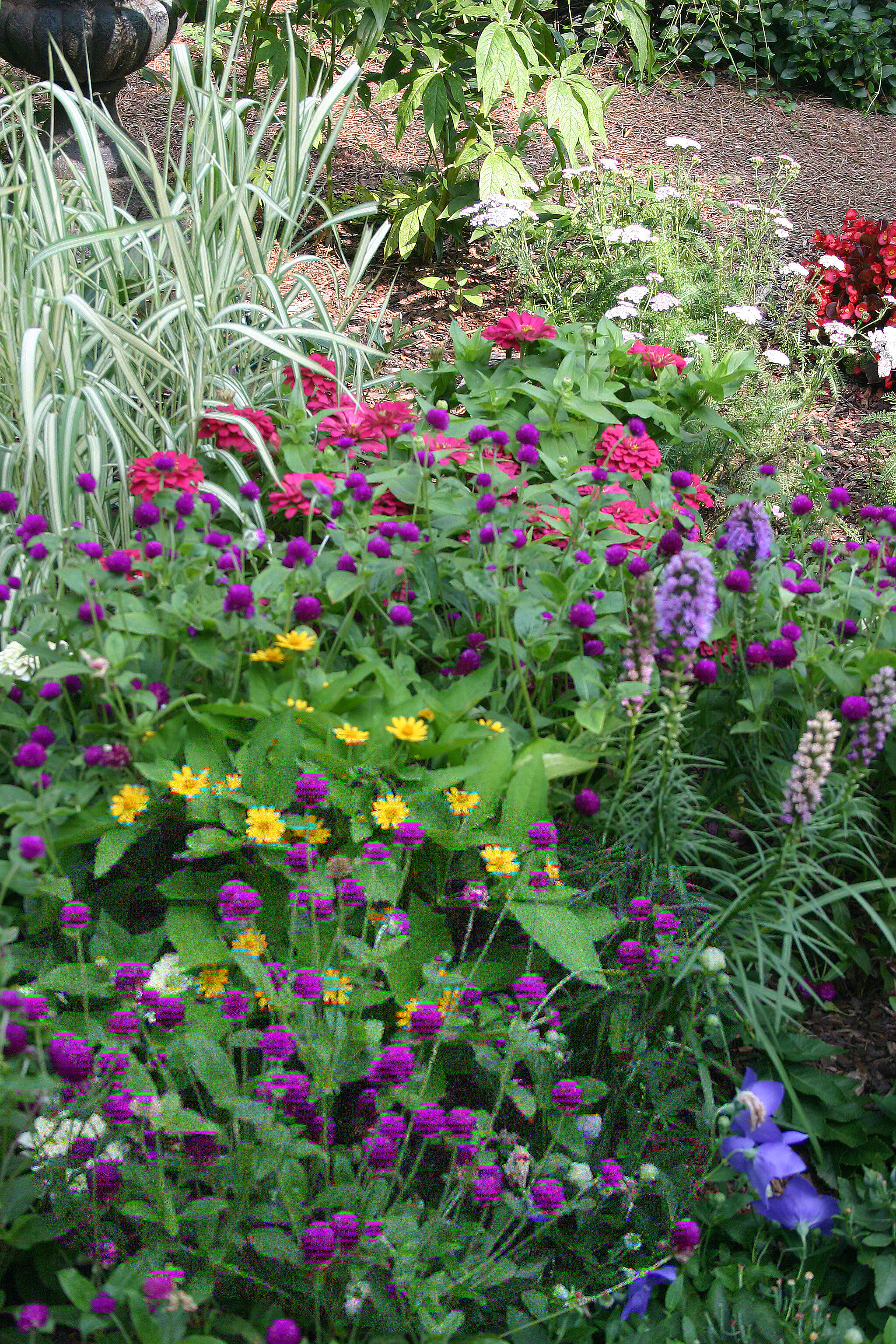Visitors to my pollinator garden are all drawn to the same plant. Not the Gaura or Lantana, not the Cuphea or Bronze Fennel. The crowd favorite is Gomphrena, sometimes called Globe Amaranth. This heat-loving annual comes in several different colors, but purple is my favorite. The color is so intense that it glows, and it looks good with any other flower shades. Gomphrena also comes in lavender, white, rose, red, and bi-colors. Blooms resemble large clover flowers.
Gomphrena is easy to start from seed. If you have a greenhouse or other warm, sunny area, start the seeds 8 weeks before the average last spring frost date for your area. Seeds germinate best when barely covered with soil and given darkness. Once seeds sprout, expose them to bright light. They grow rapidly and start blooming while they are still tiny. Mine have shown flower buds when plants were just four inches tall. Grow Gomphrena in full sun and poor-to-average soil. Plants are drought-tolerant once established. They will bloom from spring all the way to frost. The stiff, papery flowers hold their color for weeks and weeks, and will even retain their bright shades if cut and dried soon after they open. Spent blooms will eventually fade to tan and should be removed.
Most varieties will reach 24 inches tall or more by the end of the growing season. ‘Buddy’ is a purple cultivar that reaches only 12 inches (per the seed catalogs; they reach 18 inches in the Mary Snoddy garden). The ‘Gnome’ series has white, pink, or purple blooms and reaches only 6 to 8 inches. ‘Strawberry Fields’ reaches 20 inches and has an orange-red flower. Plants can be pinched back when small to make them bunchier, but they look fine without this additional work.
Gomphrena looks great in many applications. Use them in containers, as single specimens, or planted in swaths. I think they pair well with Zinnias, Marigolds, or Lantana. Butterflies love the flowers and deer leave them alone. Double win!



